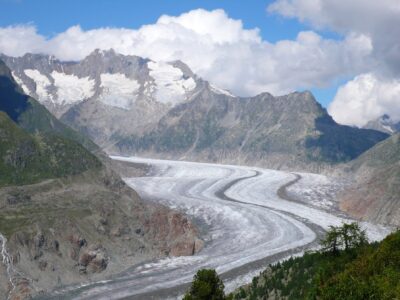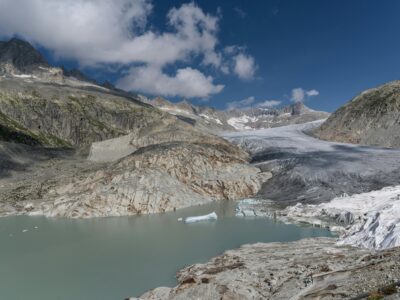Rising temperatures and melting ice play a central role in the unfolding Anthropocene—i.e., the most recent geologic period in Earth’s history. What distinguishes the Anthropocene from prehistoric human impacts on the environment, mainly those caused by the early use of fire, is the fact that humans are now aware of what’s going on—more or less.
Melting ice not only raises sea levels—which is easy to measure and has obvious, immediate effects on human society—but it also serves as a universal indicator of where human habitats, and planetary life more broadly, are heading. Yet we are still only scratching the surface of what these changes might mean, as calculated and thoughtful predictions continue to surprise us, usually with bad news.
In “Melt in the Future Subjunctive,” Rice University Professor Cymene Howe’s chapter from the book Ecological Nostalgias, seeks to fill in the picture, theorizing the place of ice in modern life and zooming in on glacial-hydrospheric ethnography, particularly in Iceland. In doing so, she contributes to the current efforts to carve out a new space for anthropology and a host of other academic communities, including geography and literary studies.
Iceland provides a useful site for Howe’s explorations. A notable part of its surface, about 10%, is covered with 400 glaciers that have been documented in detail in both folklore and historical and scientific reports, especially over the last couple of centuries.

What, then, is the salience of melting ice for our modern world? While the polar bear became a poignant figure decades ago, capturing global attention as the tragic victim of climate change, more recently it has captured the imagination of Icelanders. Polar bears are not native to Iceland, although through the centuries they have occasionally visited the country on ice floes. Now, they increasingly swim over from Greenland as their own native glaciers shrink, sparking lively debates on human and other-than-human rights and protections.
Howe also highlights the ways in which Icelandic perceptions and dialogues have captured the stickiness of jökulhlaup, or glacial outburst flooding as a result of geothermal activities. The Icelandic term jökulhlaup has seeped into geologic language, representing glacial floodings for many reasons, including those pertaining to the Anthropocene. Likewise, the native notion of jökultunga, or glacial tongue— a well-established term in Icelandic—can serve as a metaphor for the glacier as an entity that speaks. These concepts are illustrated in Howe’s chapter by her own powerful photography from different parts of Iceland.
Howe draws upon philosopher Michel Serres’ distinction between “hard” and “soft,” suggesting that hard ice (as found in nature) is only made soft through human agency. She adds an important qualification though: “The hard and the soft no longer hold (if they ever did). We are in a place much stickier than that.”
This “stickiness has probably always epitomized the relationship between natural and social worlds and their sciences,” Howe writes. Time too is increasingly soft and sticky. For decades, ice cores extracted in Arctic and subarctic zones have provided stunning insights into global climate in deep time, establishing a highly useful ecological, historical and social archive. Now, as Howe concludes, “ice…portends a future as well,” sticking its “tongue” out toward the coming and the unknown.
This is an exciting article, offering perceptive observations on frozen and fluid hydrospheres at a moment of exponential change, drawing attention to their potential theoretical and practical implications as sites of innovative anthropological analyses and effective environmental politics.

Gísli Pálsson is professor emeritus of anthropology at the University of Iceland. His latest book is “The Last of Its Kind: The Search for the Great Auk and the Discovery of Extinction.”




